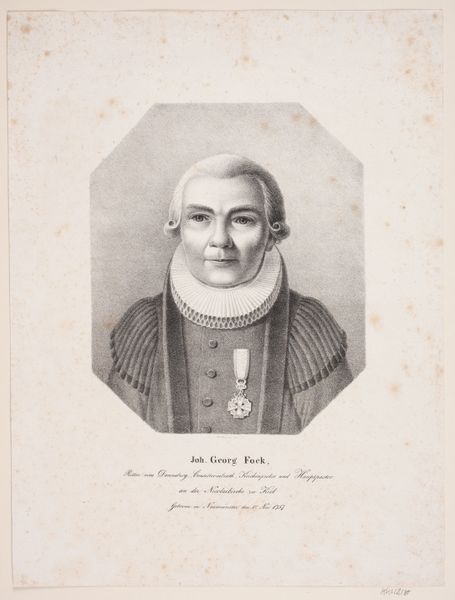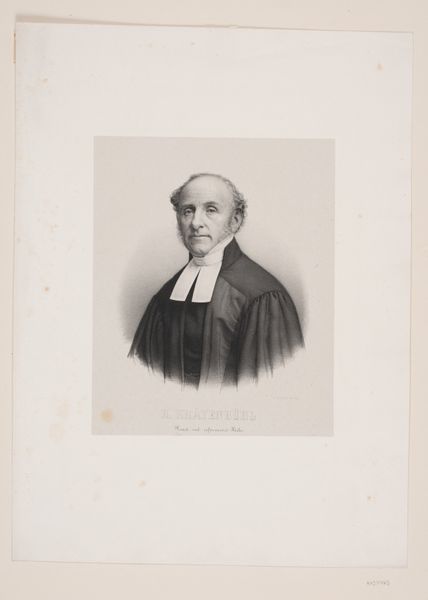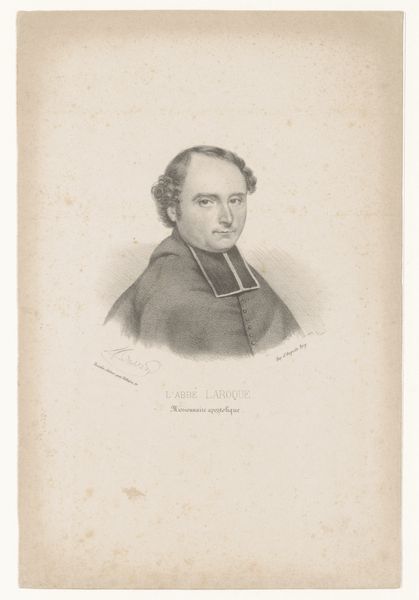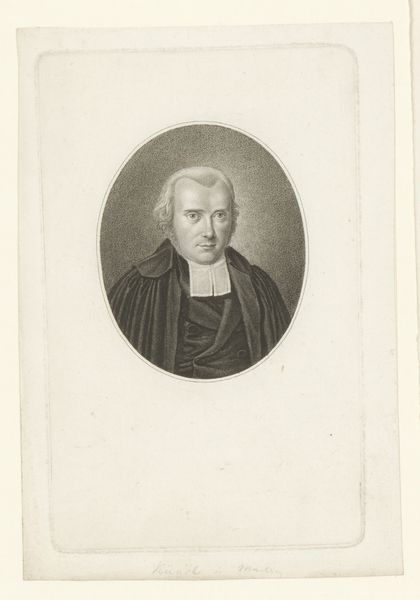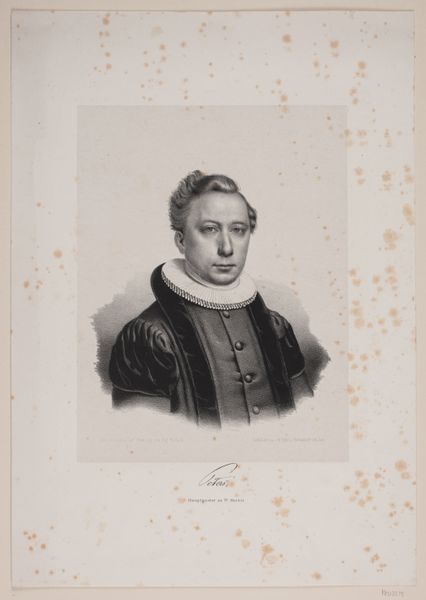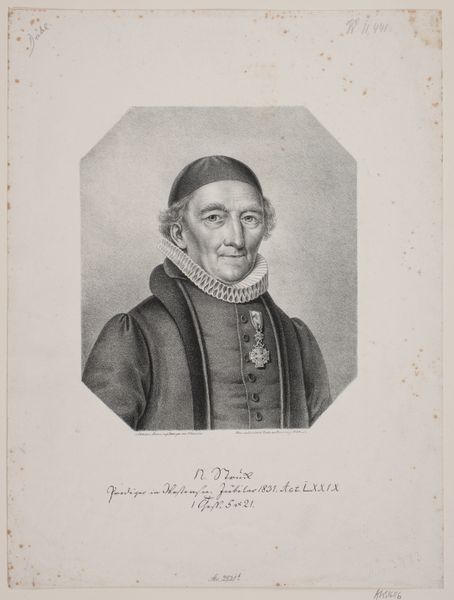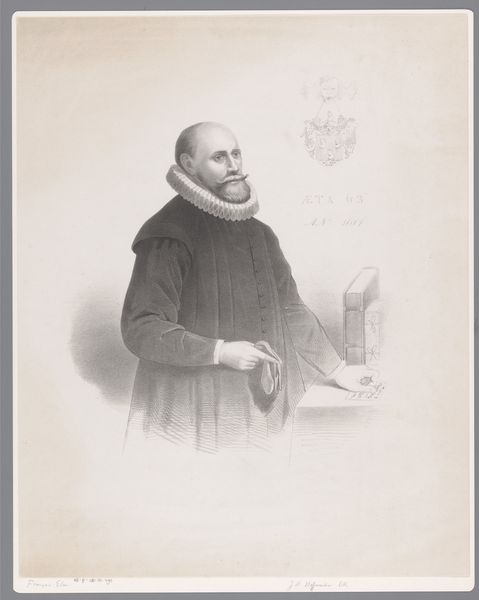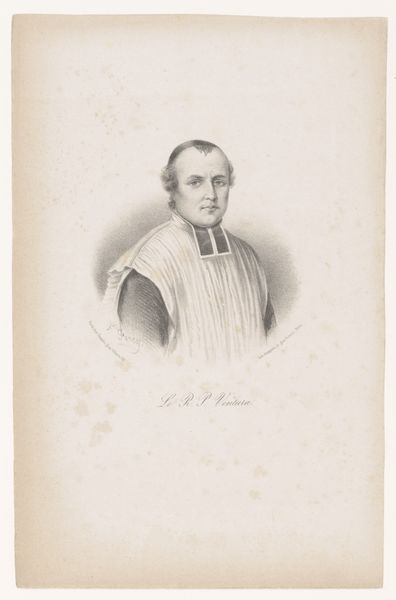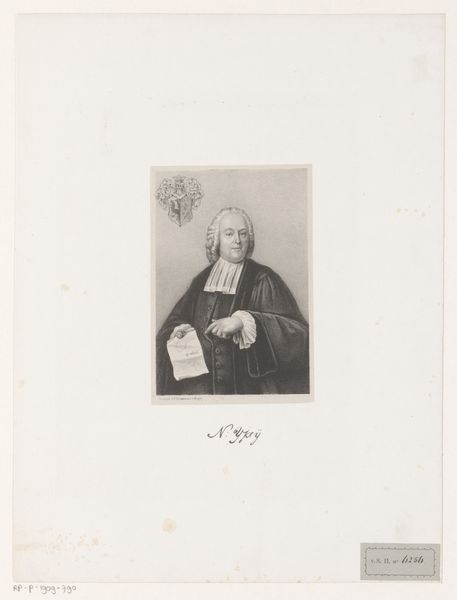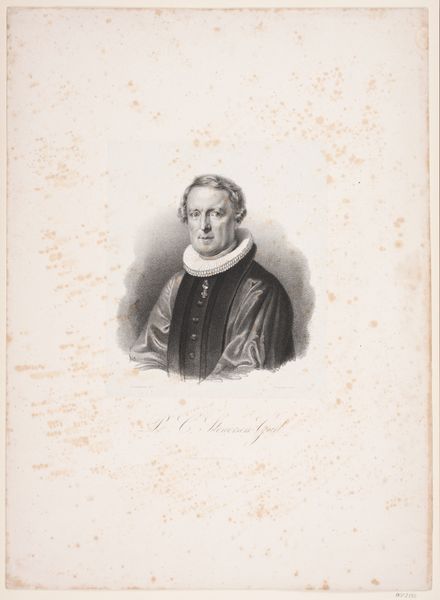
lithograph, print, paper
#
portrait
#
aged paper
#
toned paper
#
medieval
#
lithograph
# print
#
paper
#
line
#
watercolour illustration
#
academic-art
#
monochrome
Dimensions: 327 mm (height) x 245 mm (width) (bladmaal)
Curator: This is a lithograph depicting Jens Møller, dating sometime between 1806 and 1872. It’s currently held here at the SMK, Statens Museum for Kunst. Editor: My first thought is somber. The monochrome palette, the rather stern expression...it gives the portrait a weight, a sense of importance, but perhaps also distance. Curator: Precisely. Let’s look closely at the lines – crisp, academic. Notice the meticulous detail in the rendering of his features and the texture of his garments. This precise draftsmanship highlights the subject’s intellectual presence, especially coupled with that formal ruff. Editor: But is that formality also performative? Given his title inscribed below, "Doctor og Professor i Theologien," we are certainly meant to see him as an authority figure. Consider the political implications of representing religious authority so prominently, especially during periods of social upheaval and religious questioning. Curator: Certainly, that cannot be dismissed. But the intrinsic aesthetic value lies in its balance. The light catches the face and ruff, pulling the viewer in. Then the medal draws the eye downward. The texture created by the lithographic technique softens what might otherwise be a severe composition. The paper itself, patinated with age, adds a certain visual warmth. Editor: The aging, though… is it romantic patina or a sign of neglect, of institutional failures to preserve history? Consider how institutions decide which figures to immortalize and display, and, conversely, who is relegated to storage or oblivion. This piece, perhaps unintentionally, also prompts a dialogue about power, privilege, and visibility within historical narratives. Curator: Yes, a portrait always implies choices, what to include, and perhaps more importantly, what to exclude. Regardless, from an aesthetic perspective, the artist has harnessed line and tone to convey a particular impression of a prominent individual. It's an example of careful observation married with technical skill. Editor: I see that, definitely. It highlights that tension between objective artistic choices and how those translate when inserted into biased historical records and enduring socio-political conversations. Curator: Ultimately, it offers both formal elegance and layers of social context for anyone willing to pause and look more carefully. Editor: I’d say it underscores how every portrait participates in constructing and cementing social hierarchies. A reminder that visibility itself is a privilege, captured in ink.
Comments
No comments
Be the first to comment and join the conversation on the ultimate creative platform.

